Italy is home to one of the oldest continually active Jewish communities in Europe. While there were older Jewish settlements in Greece and other places in the Balkans, these were more affected by wars and political strife than in Italy. Interestingly, the closer Jews lived to Rome, the less they were likely to be persecuted by the Papacy. Furthermore, Italy generally avoided the mass deportations of Jews that was characteristic in other European countries during the Middle Ages (not to mention that more Jews survived the Holocaust in Italy than almost any other place in occupied Europe). Because of this, Italy is home to a wealth of Jewish heritage sites, including some that date back to the Roman Empire.
Ostia Synagogue
Ostia, Italy
Web: www.ostiaantica.beniculturali.it (official website of Ostia Archaeological Park)
The Ostia Synagogue is little more than a ruin among a sea of ruins in what was once the chief seaport of the Roman Empire. However, it has been dated to the 1st century AD (prior to the Great Revolt), and is believed to be the remains of the oldest synagogue ever discovered outside of Israel. It is now an important part of the Ostia Antica archaeological park.
The history of the synagogue is surprisingly well documented. It was constructed during the reign of Claudius (around 48 AD), though it is possible that the building was used as a private home before being converted to use as a synagogue a few decades later. Surviving inscriptions indicate there was a series of Torah arks here, nothing remaining however. Part of one of the remaining columns is decorated with the carving of a menorah.
Jewish Catacombs
Rome, Italy
Web: www.lnx.museoebraico.roma.it (official website of Jewish Museum of Rome)
Rome, and other cities throughout Italy and the Mediterranean, began the practice of building extensive burial catacombs during the first and second centuries AD. This was due in large part to increasingly large populations combined with ever shrinking availability of land made available for tomb construction. Historically the catacombs were associated with Christians, but there were in fact similar Jewish burial catacombs in Rome and elsewhere.
There are six known Jewish catacomb systems in and around the city of Rome. While all of these have been extensively explored over the last century, there are currently only two that are regularly open to the public. The Vigna Randanini has extensive artwork and inscriptions that give clues about Jewish life in Rome (as well as pagan symbols that suggest the catacombs might have been taken over by Jews at a later date). The Villa Torlonia Catacombs were incorporated into an air raid shelter complex during World War II.
Arch of Titus
Rome, Italy
Web: http://archeoroma.beniculturali.it/en/archaeological-site/roman-forum-and-palatine-hill (official website of the Roman Forum)
The Arch of Titus is one of the greatest surviving structures of the ancient Roman Forum. Erected to commemorate the military triumphs of the Emperor Titus, it included, among other things, a record of the Great Revolt of the Jews. It bears what might be the most famous engraving in ancient Jewish history: the sack of the Great Temple. This engraving on the arch is believed to be the only surviving visual record of Jerusalem and the Great Temple in the 1st century AD.
The most famous part of the engraving depicts the carrying off of the temple’s great golden menorah in triumph. From the time of its completion in the 1st century, it was tradition among the Jews of Rome not to walk beneath the arch. This tradition was broken in 1948, when thousands of Italian Jews marched beneath the arch in celebration of Israel’s independence.
First Ghetto
Venice, Italy
Web: www.ghetto.it (official website)
Venice, the commercial center of Europe in the late Middle Ages, was home to the world’s first true Jewish ghetto. Jews had been living in Venice since Roman times, and by the later years of the Renaissance were an integral part of the city’s vibrant cultural and commercial life. However, by the early 16th century, the ever-tightening availability of land in Venice combined with increasing intolerance towards the Jews led to the establishment of a separate gated Jewish quarter.
This was established in the Campo Gheto, or old iron foundry district. This later became known as the Gheto district, or simply ‘the Ghetto’ (the origin of the term). The ghetto remained in operation through the early 20th century, and few Jews even remained in the city after World War II. The Venice ghetto has since become a living museum, and is almost completely intact (aside from the gates which were notably destroyed by Napolean).
Great Synagogue
Florence, Italy
Web: http://moked.it/jewishflorence (official website of the Jewish community of Florence)
The Great Synagogue of Florence is considered by many to be Europe’s most beautiful and magnificent synagogue. Built in the 19th century, the Great Synagogue became the outward symbol of one of the oldest and most historic Jewish communities on the continent. Borrowing from the Moorish style that had become popular in Italy during the Renaissance, the Great Synagogue in turn has since inspired synagogue architecture all over the world.
Although built in the modern era, the Great Synagogue was in many ways a tribute to the Jewish Renaissance in Florence. The Jewish community of Florence was one of the wealthiest in Europe, and had the patronage of both the city’s rulers as well as the church (especially the Medicis). In later years, when Jews were expelled from many other places or confined to ghettos, Florence kept its doors wide open. Amazingly, the Great Synagogue survived the Holocaust with relatively little damage. The synagogue’s upper floors now house a museum on the history of the city’s Jews.
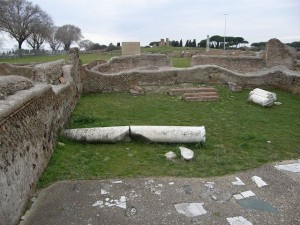
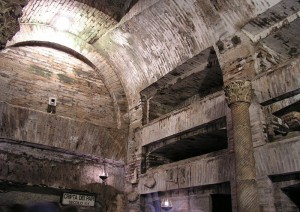
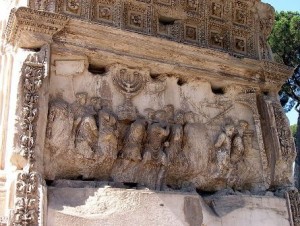
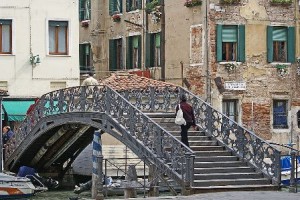
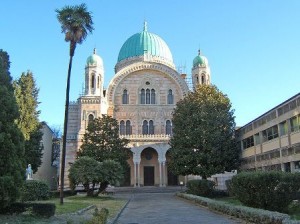
Leave a Reply